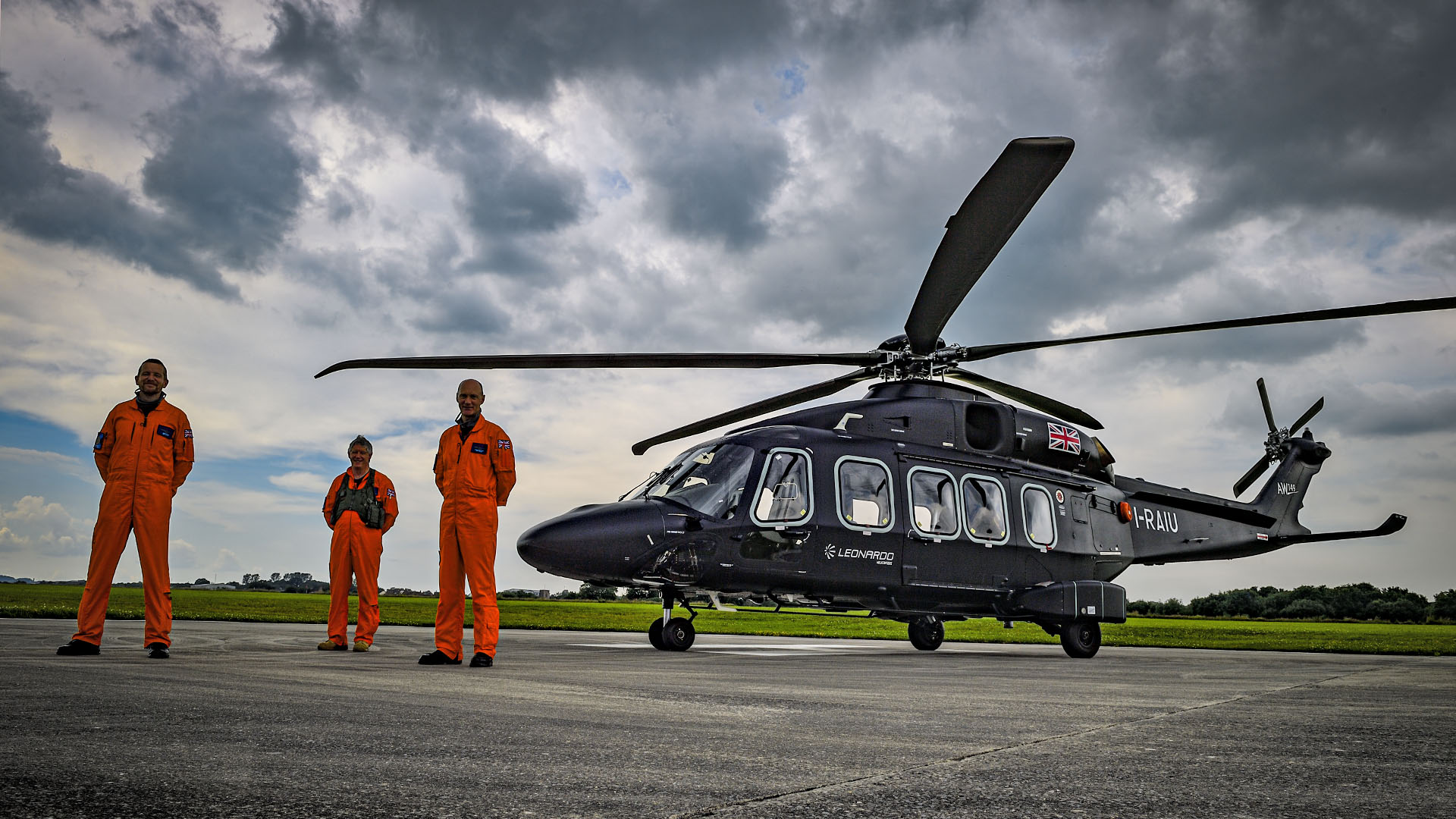Leonardo is anticipated to choose between the General Electric (GE) CT7-2E1 and the Safran Aneto-1K to propel the AW149 for the UK’s New Medium Helicopter (NMH), Janes reported.
Leonardo is pitching its AW149 for the UK’s New Medium Helicopter (NMH) requirement. The AW149 faces intense competition from the Airbus Helicopters H175M and Sikorsky S-70M, which are powered by the Pratt & Whitney Canada PT6 and GE T700 respectively.
Both engine manufacturers, GE and Safran, are emphasizing the usage of sustainable aviation fuels (SAF), as well as the engines’ legacy and compatibility with other aircraft in use in the United Kingdom. Leonardo’s current demonstrator aircraft, however, is equipped with the Safran’s powerplant.
Nick Earl, chief executive officer of Safran Helicopter Engines (SHE), praised the engine’s high power, RTM322 history, and use of SAF at a press briefing on March 23. The Aneto can currently accept 50% SAF and will be cleared for 100% SAF in two to three years, with the Royal Air Force (RAF) being particularly interested in SAF.

According to Earl, environmental programs account for about 75% of Safran’s research and development spending. The NMH deal, he said, is a “massively strategic program for us.”
Nevertheless, Safran believes its bid provides the greatest value to the UK: if the Aneto-equipped AW149 wins the NMH competition, it commits to manufacture and overhaul the 2,500shp (1,840kW)-class powerplants for the UK, as well as any for AW149 export sales, at its Fareham, England, facility.
In a media briefing on March 25 at the Fareham plant, Earl outlined the company’s plans, saying that the move will create “substantial numbers” of highly skilled jobs, benefiting one of the country’s most underprivileged areas.
If Safran and Leonardo succeed, the UK plant will become the firm’s “lead capability” for the Aneto, initially for the -1K model but eventually for all versions.
However, it will depend on the overall success of the engine. “It depends on what is successful and what the overall volumes are. If the volumes fit here and the capability is established here we will do it here,” he says.
The RTM322s that power the British Army’s older Boeing AH-64 Apaches and the Leonardo Helicopters AW101 Merlins operated by the Royal Navy are already maintained by SHE, but they are shipped offshore for total disassembly and overhaul.
While Earl claims that this would be a “significant increase” in Fareham’s capabilities, the facility already executed level 4 overhauls of SHE’s Arrius and Arriel engines, leaving crucial infrastructure such as test cells in place. He describes it as a “re-organization and recommissioning” rather than a “new build or starting from scratch.”
GE and Safran In India
In India, GE and Safran are also in-line to grab lucrative deals from the Indian Air Force. The F404IN20 engines for the Light Combat Aircraft (LCA) Tejas Mk-1 are supplied by the American manufacturer GE. The F414-INS6 engines from the firm were also chosen to power the LCA MK-2.
Last year, Hindustan Aeronautics Limited (HAL) and GE Aviation inked a $716 million deal for 99 F404 aircraft engines and associated services for the Tejas Light Combat Aircraft (LCA) Mk-1A.
Chris Cyr, Vice President, Business Development and Sales, GE Aviation, previously said the F404 family of engines has proven itself in operations all over the world. He stated that they were “committed to deliver all 99 engines and support services by 2029.”
Meanwhile, it was recently reported that India and France are close to sealing an agreement for the cooperative development of a 125Kn thrust engine for India’s fifth-generation fighter aircraft, the AMCA.
During his visit to Paris last month, External Affairs Minister S. Jaishankar apparently discussed the mattert with French Defense Minister Florence Parly.
Defense Minister Rajnath Singh also indicated in December 2021, following Parly’s visit to India, that a big French corporation will come to India and “manufacture the engine in strategic partnership with an Indian company.”
While there is still no official confirmation on Safran’s involvement, the Week stated in early 2019 that the AMCA will be propelled by a GE F414 engine with a thrust of over 90kN.
This was supposed to be a temporary configuration until a higher-thrust 110kN engine could be developed. The intention, according to reports, was to fly the AMCA for the first six to seven years with the F414 engine as an “interim engine.”
As per the latest reports, the AMCA will be produced in stealth and non-stealth versions and will be built in two phases: an AMCA MK1 with an existing GE414 engine and an AMCA Mk2 with a jointly developed enhanced, more powerful engine.
- Contact the author at ashishmichel@gmail.com
- Follow EurAsian Times on Google News